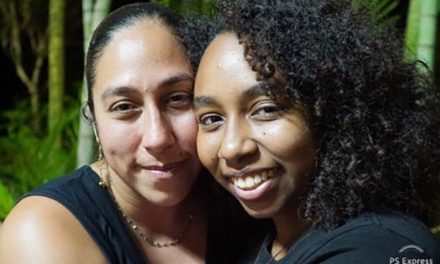María Suárez Toro,
INMAR Caribe and CCBEM
The first dialogue between the current youth leaders of the Diving Center Ambassadors of the Sea (CCBEM) and the director of the international Institute of Archaeomythology (IA) took place on May 8 via Zoom in preparation for a Seminar that is being organized in the Southern Caribbean of Costa Rica.
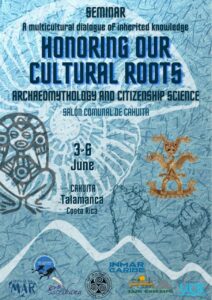
When Dr. Joan Marler of the IA met Maraya Jíménez and Pete Stephens – current president and vice president of the CCBEM – the interactive knowledge that emerged made it clear that the purpose of the event can definitely be met.
Beyond shared experiences, the dialogue between them presented an epistemological and an ontological richness that emerged between different forms of knowledge shared.
The event to be held between June 3-6 at the Cahuita Community Center, has has been designed as “a multicultural dialogue of inherited knowledge, honoring our cultural roots” and that perspective was fully reflected in the first meeting between two of the parties organizing the Seminar.

Maraya Jiménez explained to Joan Marler that for her, the approach to archaeomythology has recently meant “being able to talk about the experience in underwater community archeology in a comprehensive way that integrates what we feel, live, learn and remember in the search for the identity of slave shipsm, that have to do with our roots”. She added that the citizen science with which the Caribbean diving youth have made the discoveries of the history of the Danish slave ships finds expanded scientific legitimation in the discipline of archaeomythology.
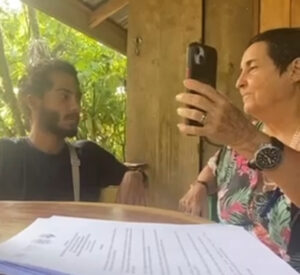
Pete Stephens, scuba diver who has participated in all the marine Expeditions led by the CCBEM between 2016 to the present, highlighted that every time they have gone down to the bottom of the sea in search of the sunken ships, they have been filled with new experiences, thoughts. and impressions and that archaeomythology allows us to have a way to understand and express in all its scope “what we are experiencing and who we are, through our identities.”
In the Zoom with the two multiethnic divers (Afro-descendants and indigenous) born in the Southern Caribbean, there was a young Yoruba from Lagos, Nigeria, resident in the Caribbean of Costa Rica. 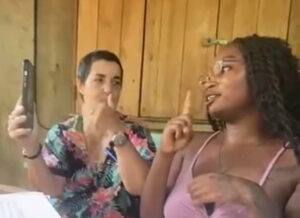
Collaborator of the Institute of Citizen Sciences of the Sea (INMAR Caribe) for the Seminar, Toliwanimi Obiwole explained to Dr. Marler that in her country many of the cultural objects excavated there have been taken from the Nigerian people to be placed in European museums, for which hardly one museum in the country contains excavated artifacts that represent cultural expressions of the local African population.
“In this way the visual evidence of our ancient history has been taken from us, but now in Costa Rica, upon learning the process of underwater archaeomythology, I have discovered that our African cultures have followed us here. I had to come to Costa Rica to come in contact with my own legacy!”
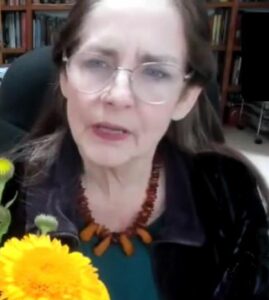 Upon listening to the youth´s perspectives, Dr. Marler reaffirmed the connections between archaeomythology and citizen science. “You, the youth divers who are investigating the shipwrecks off the Caribbean coast of Costa Rica, come from families that have lived and fished in the Caribbean region of Costa Rica for countless generations. “Your origins represent complex intertwinings of indigenous and Afro lineages that contain cultural influences that continue to resonate in you” she told them.
Upon listening to the youth´s perspectives, Dr. Marler reaffirmed the connections between archaeomythology and citizen science. “You, the youth divers who are investigating the shipwrecks off the Caribbean coast of Costa Rica, come from families that have lived and fished in the Caribbean region of Costa Rica for countless generations. “Your origins represent complex intertwinings of indigenous and Afro lineages that contain cultural influences that continue to resonate in you” she told them.
Adding some history about the discipline, she explained that Lithuanian-American archaeologist Marija Gimbutas created the interdisciplinary methodology of archaeomythology to expand the interpretive boundaries of her discipline.
“In Gimbutas’s opinion, it is necessary – not only to investigate physical artifacts – but to include the study of non-material aspects of culture, including language, iconography, symbolism, legends, folklore, songs, stories, music, dance and other aspects of culture that convey identity and meaning.”
For Dr. Marler, these young leaders of these processes in their communities are encouraged by the interdisciplinary approach of archaeomythology, not only to investigate the evidence of slave ship wrecks, but also to investigate the results of their appearance in the context of the living cultures of the region and in that way, they are discovering the richness of their own heritage and intertwined identities.


